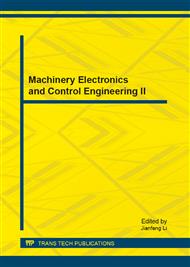p.262
p.266
p.270
p.277
p.281
p.287
p.291
p.296
p.300
Research and Validation of ICs' TDDB Physics-of-Failure Model
Abstract:
In the new era, the reliability technology based on physics of failure (PoF) is playing an increasingly important role in development of electronic equipment. PoF models of electronic products, as the foundation and core of this advanced technology, are the main point of engineering application. With continual scaling of VLSI in electronic equipment, the electric field across gate oxide becomes higher and higher and affects the reliability of semiconductor device greatly. In this paper, TDDB failure mechanism and Physics-of-Failure model was researched firstly. Then the test sample was designed and processed, and the test verification program for TDDB Physics-of-Failure model was carried out to develop the test verification, collect and process test data. Through analyzing test data, the parameters of TDDB model were determined and modified to ensure the Physics-of-Failure model precision and the model could be used in engineering. Based on modified model, the reliability of integrated circuits can be evaluated at designing stage. And the inherent reliability of integrated circuits in electronic equipment could be improved by design optimization to reduce the risk in the process of using.
Info:
Periodical:
Pages:
281-286
Citation:
Online since:
March 2013
Authors:
Price:
Сopyright:
© 2013 Trans Tech Publications Ltd. All Rights Reserved
Share:
Citation:


